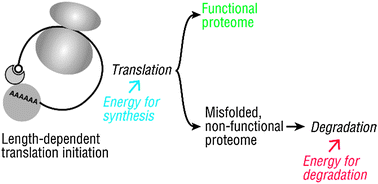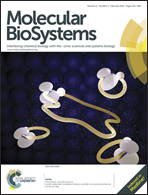Length-dependent translation initiation benefits the functional proteome of human cells†
Abstract
We previously found that shorter mRNAs are preferably translated in various eukaryotic cells. However, the theoretical basis of this phenomenon is unclear. We hypothesize that shorter mRNA length correlates to the decreased translational error rate to reduce the energy consumption on defective protein degradation. In this study, we established a computational model to explain the length-dependent translation initiation efficiency. We provided mathematical evidence that this translational preference, rather than the protein degradation, is a major factor to shape the genome-wide length-dependent protein abundance. As deducted, we simulated that shorter mRNA length is a determinant of initiation circularization time. Furthermore, our model unveiled that preferentially translating shorter mRNAs benefits the energy efficiency on the proteome functionality. We proposed that cancer cells tend to hijack this evolutionary mechanism by counteracting the higher translational error rate. In conclusion, our model provides insights into the nature of the global length-dependent translational control and its biological significance.



 Please wait while we load your content...
Please wait while we load your content...